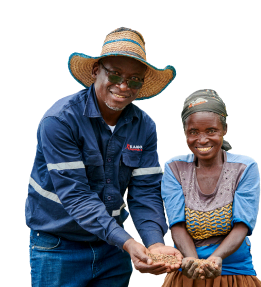Democratic Republic of the Congo
Kipushi Zinc Mine
Ownership: Ivanhoe Mines 62%
Gécamines 38%
The Kipushi zinc-copper-germanium-silver-lead mine in the DRC is the world's highest-grade zinc mine. Construction of the new 800,000-tonne-per-annum concentrator facility was completed in May 2024 with first concentrate produced in June 2024. The concentrator includes dense media separation (DMS) and a milling and flotation circuit and is expected to produce more than 278,000 tonnes of zinc in concentrate over the first five years of production. Design recoveries are targeted at 96%, with a concentrate grade averaging 55% contained zinc.
Kipushi’s 2025 production guidance is set between 180,000-240,000 tonnes of zinc in concentrate.
Download 2022 Feasibility Study
Ivanhoe acquired its 68% interest in the Kipushi Project in November 2011, through Kipushi Holding which is 100%-owned by Ivanhoe Mines. The balance of 32% in the Kipushi Project is held by the DRC state-owned mining company, Gécamines, whose ownership will increase to 38% upon completion of the conditions precedent to the updated joint venture agreement signed in late 2023.
The Kipushi mine is adjacent to the town of Kipushi in the DRC approximately 30 kilometres southwest of the provincial capital of Lubumbashi. It is a high-grade, underground zinc-copper project in the Central African Copperbelt which mined approximately 60 million tonnes grading 11% zinc and 7% copper between 1924 and 1993. In addition to producing copper and zinc, the mine produced 12,673 tonnes of lead and approximately 278 tonnes of germanium between 1956 and 1978. The mine had been managed on a care and maintenance basis since 1993. In late 2022, Ivanhoe and its partner Gécamines finalized an agreement to return Kipushi to production.
Underground development continues to open multiple access levels into the Big Zinc orebody, while decline development is well-advanced. As at December 31, 2023, 4,565 metres of lateral and decline development was completed for the project to date, and a total of 3,957 metres of horizontal development had been completed during 2023, approximately 20% ahead of schedule. Stope perimeter drives are being developed on the 1,245m, 1,260m, 1,290m and 1,320m levels, with stope access development at the 1,335-metre level is advancing well. Waste rock and low-grade mineralized rock from the advancement of the perimeter and access drives are being hoisted to the surface through Shaft 5 and stockpiled. Shaft 5 is planned to be the main production shaft with a maximum hoisting capacity of up to 1.8 Mtpa. The bottom of Shaft 5 provides primary access to the lower levels of the mine, including the Big Zinc orebody, along the 1,150-metre haulage level.
Approximately 336,000 tonnes of development ore stockpiled on surface at a grade of 23% zinc at the end of Q2 2024. A total of 18,733 tonnes were mined at the 1,245m level, with an average grade of 18.7% zinc. Mining panels have been established between the 1,290-metre level and the 1,320m level.
Powered by renewable hydro-generated electricity, Kipushi is set to be among one of the world’s lowest Scope 1 and 2 greenhouse gas emitters per tonne of zinc metal produced and will be the world’s highest-grade major zinc mine, with an average grade of 36.4% zinc over the first five years of production.
Shaft 5
Shaft 5 is planned to be the main production shaft once operations commence, with a maximum hoisting capacity of up to 1.8 Mtpa. The bottom of Shaft 5 provides primary access to the lower levels of the mine, including the Big Zinc orebody, along the 1,150-metre haulage level.
De-bottlenecking program
Basic engineering has commenced on de-bottlenecking initiatives of the Kipushi concentrator, to target a 20% increase in processing capacity to 960,000 tonnes of ore per annum. The de-bottlenecking program is expected to take approximately nine months, based on the availability of long-lead order equipment.
Lowest greenhouse gas emitter
Kipushi will be the lowest greenhouse gas (GHG) emitter per tonne of zinc produced. On a Scope 1 and 2 basis (reported from ore to mine gate), Kipushi’s GHG emissions intensity for 2025 is expected to be 0.019 equivalent tonnes of carbon dioxide per tonne of contained zinc produced (t CO2-e / t Zn). This ranks Kipushi near the bottom of the Scope 1 and 2 GHG emissions curve.



 English
English Français
Français 日本語
日本語 中文
中文